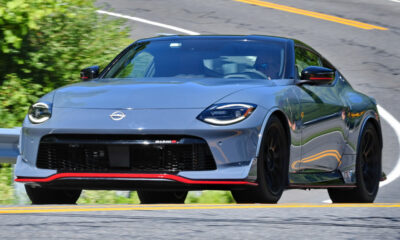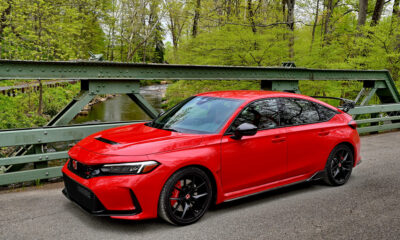For someone with plenty of front-wheel drive racing experience, the appeal of TCRs is undeniable. They look like proper touring cars, are homologated for global competition, and based around a two-liter turbo engine formula.
To say the least, I was thrilled when Compass Racing team principal Karl Thomson invited me for some seat time in one of their new Audis at Canadian Tire Motorsport Park.
Like most modern, production-based race cars, you sit on the floor, and further back in the chassis than the road car seat, and visibility is a secondary consideration. That seating position is more for safety and weight distribution, and Audi Sport has done a bit more clever work on this front.
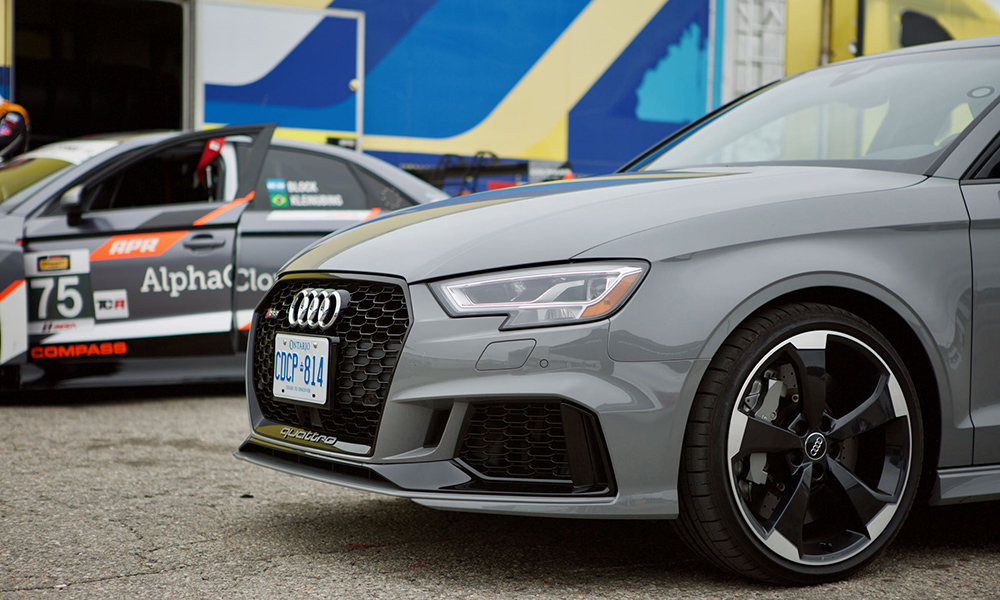
Photo: Derek Kreindler
Since there’s no driveshaft running down the center of this RS 3, they’ve cut away some of the floorpan and moved the driver’s seat inboard. It’s a cool trick that my team also did on some previous front drive race car builds.
There’s also a clever safety hatch in the roof.
As I was getting suited up, I asked Pierre Kleinubing, touring car legend and driver of the No. 75 Audi, about his bewinged racer.
He said to keep the nose up on turn in so that the air flows under the car.
That’s especially important at this track where you’re turning into nearly every corner at CTMP with a good bit of speed and also means my typical front wheel drive driving style of brake late, turn it in, come off the brake, and stomp on the throttle wasn’t going to work.
I also asked Kleinubing about the balance of the Audi, whether it’s set up to be loose like a typical front wheel drive and, to my surprise, he told me that it’s pretty benign.
He said that I shouldn’t expect any of that wild, loose handling I’m used to with my past front drive race cars.
I’m sure the surprised look on my face said it all and, if that’s really the case, then Audi Sport has worked some real magic here.
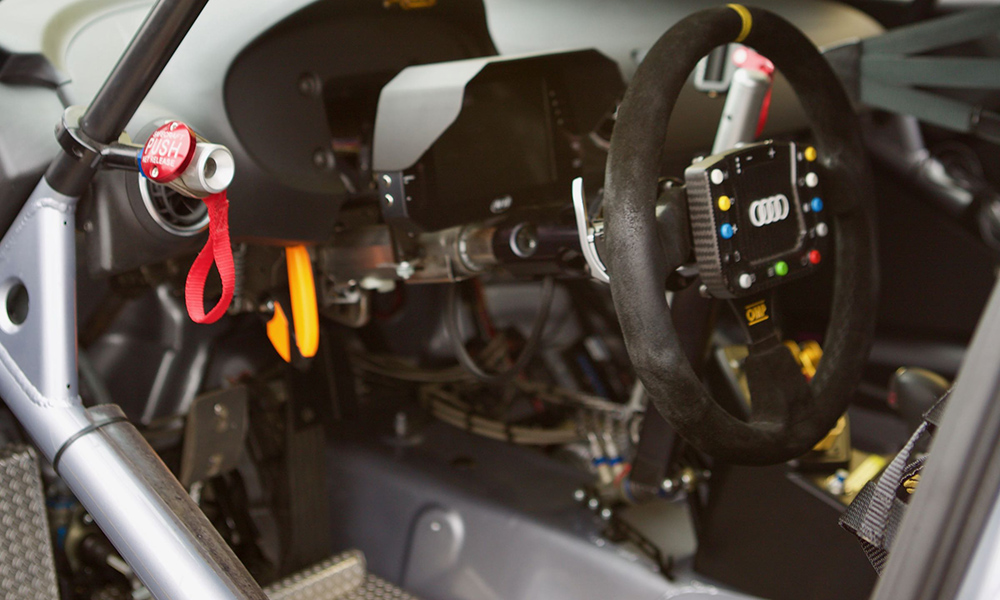
Photo: Derek Kreindler
Inside the race car, the pedal box is a two pedal setup and the steering wheel is a standard OMP race wheel, it’s actually round, with a set of buttons in the center.
The shift paddles look and feel like they’re straight out of the RS 3 road car. The display is standard AiM unit and it’s simple and effective.
This IMSA Continental Tire SportsCar Challenge-spec Audi is fitted with a DSG transmission, but it’s also available with a sequential box.
The Continental slicks have massive grip and it’s the first time I’ve driven them. They’re very consistent and are very controllable when they break away, like I did on entry to Mosport’s famous Moss Corner.
The Audi TCR, though, is so accommodating that it gives you a huge amount of confidence to push harder and harder.
With its wide track and the Continental slicks, it turns in immediately and the steering is exceptionally precise. And it’s very stable, particularly around CTMP’s famous high speed corners. Control weights are light and over a long stint, this Audi isn’t going to beat you up.
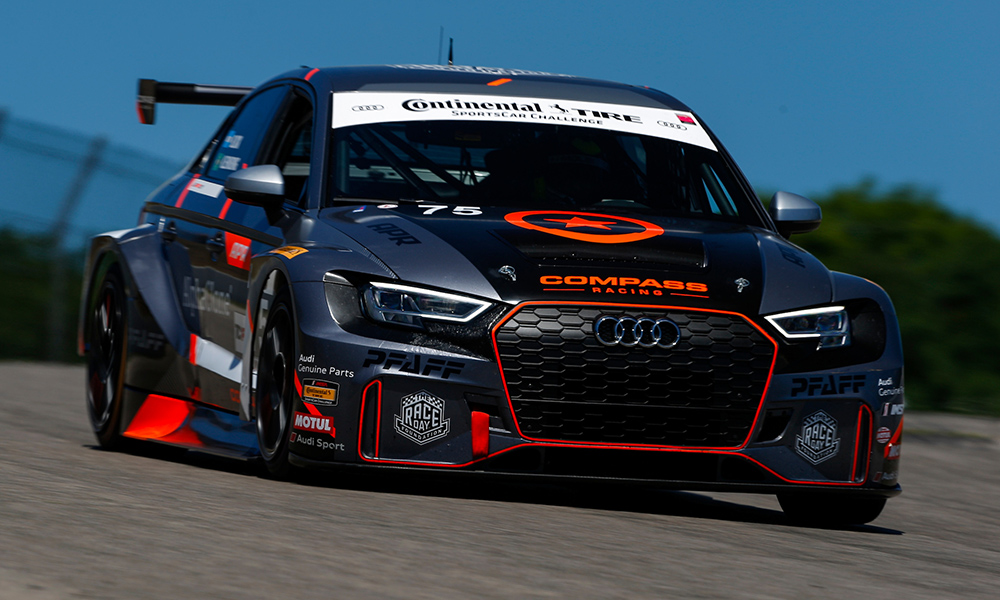
Photo: Jake Galstad/IMSA
What I love about this Audi is that it’s a very well behaved front driver.
Like Pierre told me, it doesn’t require a loose setup, which is the very opposite of every fast front wheel driver race car I’ve driven before.
It’s the sort of car that encourages you to explore its limits, and although I know I took big chunks of time out of each subsequent lap, I was having such a good time, that I didn’t even bother checking lap times.
Perhaps I didn’t want to know, but one thing’s for certain: Compass Racing didn’t immediately send me a contract afterwards.
Still, after years of racing front-wheel drive race cars with balance akin to the proverbial knife edge, the Audi RS 3 LMS TCR surprised me with its pussy cat dynamics.
The brilliant looks and massive easy-to-drive factor undoubtedly enhances the appeal of this category to racers everywhere and I’m already plotting to find my way behind the wheel of another TCR race car.
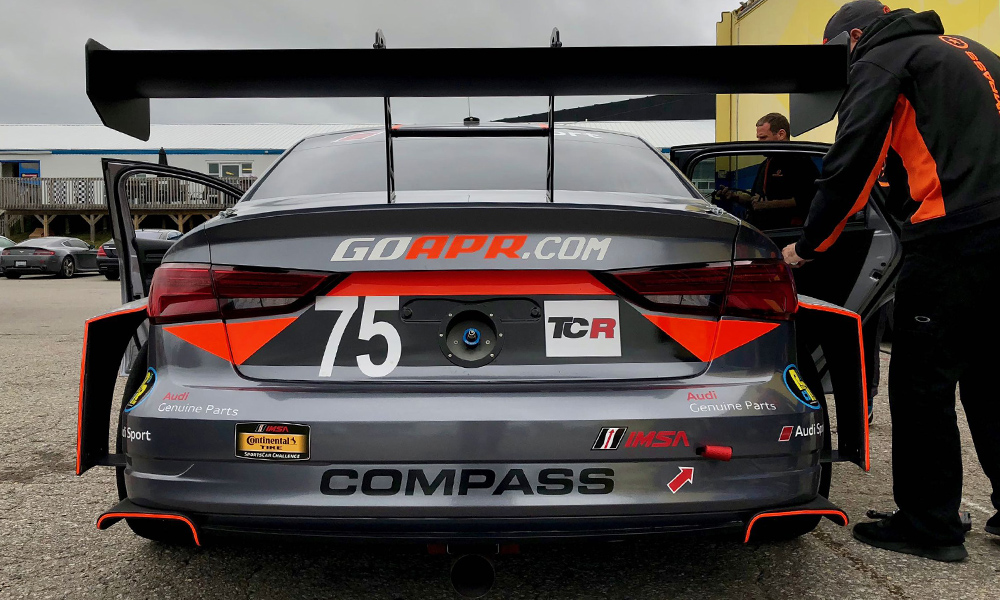
Photo: Brian Makse























